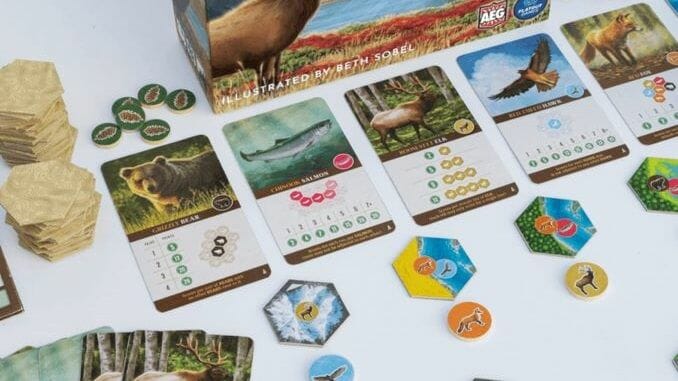Accessible but Challenging, Cascadia Is One of Our Favorite Recent Board Games

Cascadia was my #3 new game of 2021 thanks to a combination of easy-to-learn rules and variable scoring methods, making it a solid family game that is meaty enough to satisfy more experienced gamers as well. It’s a game that not only rewards replaying, but makes you want to do so immediately because you realize all the other strategies you didn’t get to try the last time around.
Cascadia came out last summer from Flatout Games, the same studio that gave us the surprisingly complex game Calico the year before, with Cascadia a sort of “spiritual successor” to the first title. Calico looks cute and simple, with a theme built around cats and quilts, but the game itself presents a difficult challenge with tight scoring rules and an unforgiving structure—you have a board with a frame around it and have limited places to put hex tiles, with no chance to move them later if you make a mistake.
An early error can sink your entire game in Calico, but that’s not true in Cascadia, where you also place hex tiles but build your “environment” free-form on the table. Cascadia revolves around five animal types, which score differently from each other and can score differently from one game to the next; and five habitat types shown on those hex tiles, which always score the same way, with points for your largest area of each. On any turn, you will choose a hex tile/animal token pair from the market, which will always have four such pairs available. You place the hex tile adjacent to one already in your environment, and then place the animal token on any tile in your environment that shows that animal’s symbol. You don’t have to place the animal token on the tile you just took; that’s often illegal anyway, since the tile may not show that animal’s symbol. Every player will take 20 turns, thus placing 20 tiles and 20 animals, not counting the three-hex start tile with which you begin the game.
-

-

-

-

-

-

-

-

-

-

-

-

-

-

-

-

-

-

-

-

-

-

-

-

-

-

-

-

-

-

-

-

-

-

-

-

-

-

-

-








































